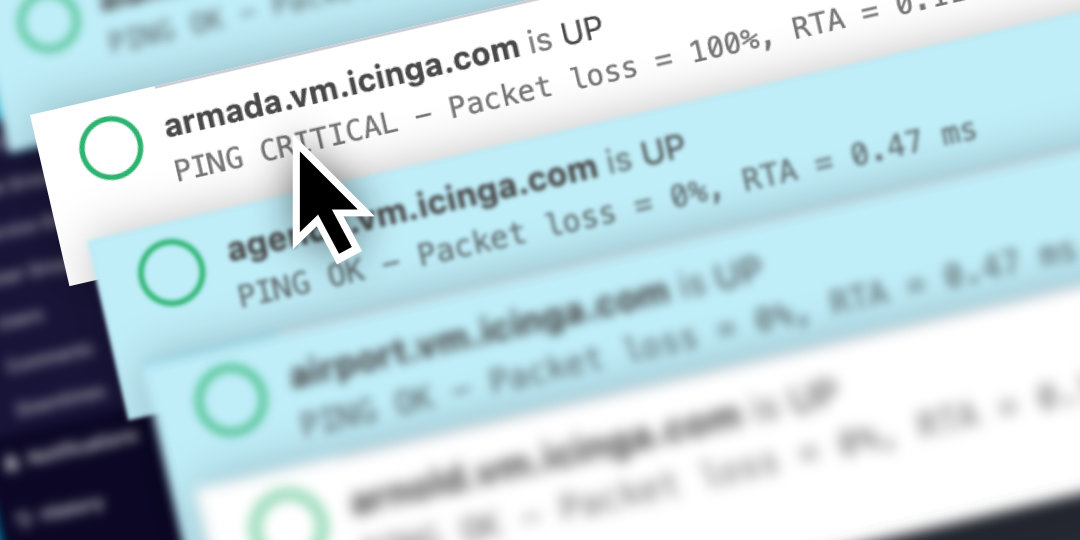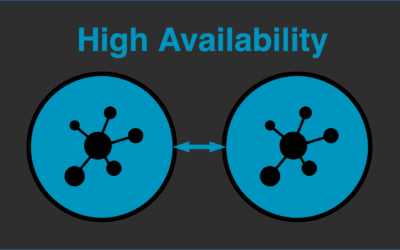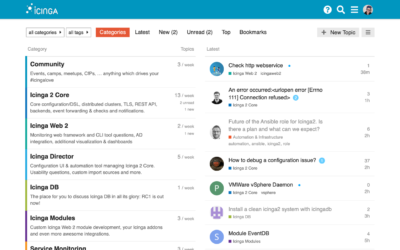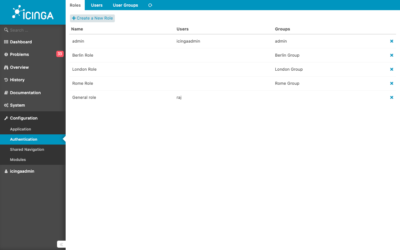Automating the monitoring process for a huge amount of servers, virtual machines, applications, services, private and public clouds is a main driver for users when they decide to use Icinga. In...

Monitoring Automation with Icinga Director
Automating the monitoring process for a huge amount of servers, virtual machines, applications, services, private and public clouds is a main driver for users when they decide to use Icinga. In...

Icinga Notifications: Custom Channel Plugins
As many of you have already seen in our previous blog posts and our early beta release, we're working on a new, independent notification module. Right now, we only offer three ready-made channels for sending notifications. Today, I want to show you how you can create...

Multi Element Selection in Icinga DB Web
From time to time we want to bring not so widely known features of Icinga into spotlight. In this effort it’s a not so obvious feature, that was available in the monitoring module of Icinga Web 2 at some point already. It has also been available in Icinga DB Web since...
Docker: Secure, but comfortable images.
While developing Docker images for Icinga 2, Icinga Web 2 and Icinga DB we stumbled over OpenShift which doesn’t allow images to run as root by default. One has to enable that explicitly. Also admins of K8s environments being more permissive by default may decide not...
Build your own Icinga Module
Building your own Icinga Module sounds like a big challenge, but is it really that hard? A look behind the scenes reveals that it's actually not as complicated as it sounds. But first things first: Why would you even want to create your own Module? It's fairly easy to...
Icinga DSL: A couple of (unconventional) examples
Today I will show you a couple of out of field useful functions from the Icinga DSL I use when creating some testing configurations for Icinga 2. Using the Icinga DSL is easy, quick and a good way of testing and validating your Icinga setup. Icinga 2 console...
Rule based monitoring with Icinga apply rules
Apply rules simplifies creation of objects like Service, Notification, Dependency, ScheduleDowntime which require object relation. In this blog post we will understand rule based monitoring with Icinga apply rules with examples. Requirement: Icinga 2 and Icinga Web 2...
Setting up Graphite from Scratch on Icinga Web 2
INTRODUCTION In this post, I will show you how easy you can integrate Graphite with Icinga Web 2. I assume you have a Icinga 2 ready with Icinga Web 2 Server running, and you have an additional Linux Server where you will install Graphite. It's recommended to have...
How to set up High-Availability Masters
When getting started with Icinga 2, a single master instance is often sufficient. However, if your monitoring is business-critical, you’ll need to set up High-Availability Masters to ensure redundancy and stability. This post will guide you through the process of...
Exporting Data from Icinga Web 2
Today we will talk about exporting data (such as hosts and services) from Icinga Web 2 into various formats. Exporting From the UI You have probably already seen the drop-down in the upper left corner of a list? If you hover there with your mouse or focus it by...
community.icinga.com
Have you been to the Icinga Community Forum yet? The community forum is a place where you can meet and chat with other Icinga users. It’s hosted by Icinga and moderated by both the Icinga team and members of the community. It’s mostly being used as a platform to ask...
Icinga Web permissions and restrictions (how do they work, examples)
Permissions and restrictions are something used to control how much access is provided to a particular user or user group. Therefore one must first understand what is the role of a user or a group. Requirement: Icinga 2 and Icinga Web 2 installed. Hosts and services...

Subscribe to our Newsletter
A monthly digest of the latest Icinga news, releases, articles and community topics.





